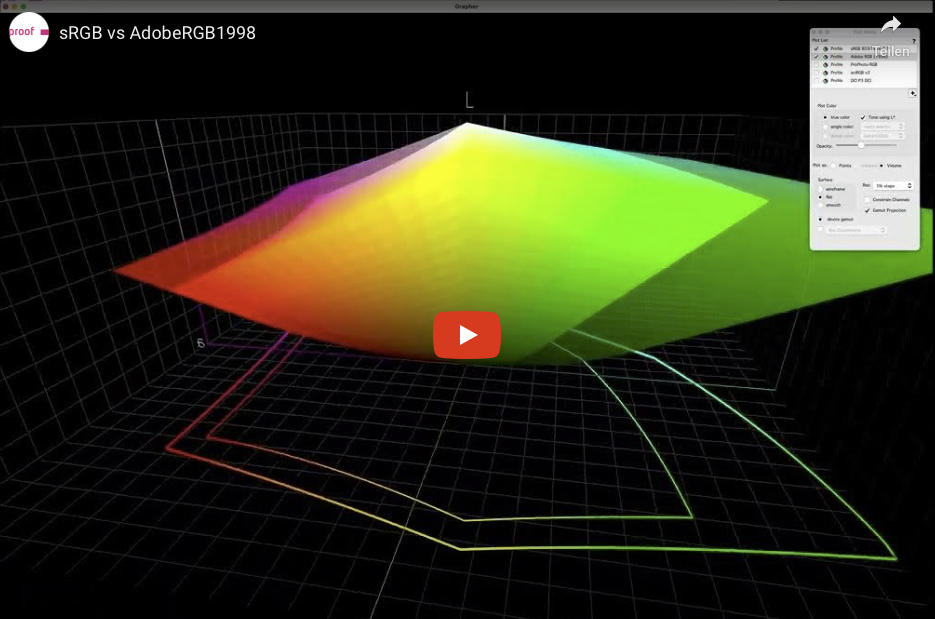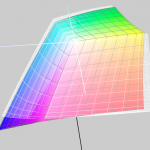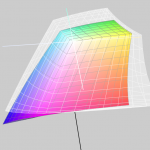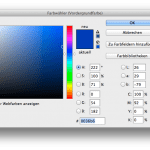RGB colour spaces are colour systems that represent different hues with the three primary colours red, green and blue. RGB colour spaces are used in digital image processing, photography and computer technology to precisely define colours. The most important RGB colour spaces and their special features are:
sRGB
sRGB is the most widely used RGB colour space and is used by most monitors, printers and digital cameras. It was developed by HP and Microsoft in the 1990s to create a standard for colour representation on the internet and on various devices.
Properties of sRGB:
- Gamut (colour gamut): Relatively small compared to other RGB colour spaces, but covers the majority of colours that can be displayed on standard monitors.
- Application: Ideal for web graphics, general photography and printing applications where consistent colour reproduction on different devices is important.
- Calibration: Easy to calibrate and widely supported.
- Weakness: sRGB is significantly smaller than the classic CMYK colour space ISOCoatedV2, particularly in the cyan range. The bluest cyan in sRGB is around 80% cyan in ISOCoatedV2. So there is a lot missing in sRGB.
- My observation: My observation: Although many inexpensive monitors are still not able to display the sRGB colour space comprehensively, sRGB is the current calibration standard for the slightly better colour management-capable monitors. Nevertheless, a few years ago I bought my wife a notebook that had a very long battery life and a very energy-efficient display. I measured the colour space there once: It only had 49% sRGB coverage…. In other words, even this monitor could only display less than half of the ‘smallest’ RGB colour space. ‘No wonder my wife doesn’t order anything on the Internet’, I thought after the measurement, “everything looks grey to her…”. 🙂 To put it bluntly, but all of us who are involved in the design of colour should remember: there are many people who simply cannot see our designed and defined colour. Whether on bad screens or projectors: sRGB is far from being the standard in the display world.
Adobe RGB
Adobe RGB was developed by Adobe Systems in 1998 to cover a larger colour space, particularly in the field of pre-press and professional photography. This colour space includes more green and blue hues than sRGB.
Properties of Adobe RGB:
- Gamut: Greater than sRGB, especially in the green and cyan colour range.
- Area of application: Often used in professional photography and graphic design, where precise colour reproduction is important. Modern cameras in particular also offer AdobeRGB as an alternative colour space instead of sRGB in order to save images directly to the SD card in AdobeRGB.
- Calibration: Requires careful calibration and suitable output devices to make full use of the extended colour space.
- My observation: Today, almost all good, hardware-calibratable wide-gamut monitors have either the entire Adobe RGB colour space, or at least 99% of the colour space in the display. Why has Adobe RGB become so popular in the world compared to ECI RGB V2? Because this colour space was simply pre-installed everywhere by Adobe … but not because it is better or significantly different. But if you have a monitor that has Adobe RGB and can display this colour space, you have still bought an expensive monitor today.
Many SLR cameras also offer photography in both sRGB and Adobe RGB.
ProPhoto RGB
ProPhoto RGB, also known as ROMM RGB (Reference Output Medium Metric RGB), was developed by Kodak and offers the largest colour gamut of the common RGB colour spaces. It was specially developed for professional image processing and archiving.
Properties of ProPhoto RGB:
- Gamut: Covers almost the entire visible colour space, including many colours that are barely perceptible to the human eye.
- Area of application: Ideal for professional photography and image processing, especially when working with RAW files to obtain the maximum colour range.
- Calibration: Very demanding in terms of calibration and requires high-quality output devices that can display the large colour space.
- My observation: ProPhoto RGB is hardly used by photographers today, but is still widely used due to its sheer size. In the Spectraproof soft proof system, for example, ProPhoto RGB is used to integrate paper textures and hot foil laminations in silver and gold into the soft proof with Spectraproof.
DCI-P3
DCI-P3 is an RGB colour space developed by the Digital Cinema Initiatives (DCI) and is mainly used in the film industry and on modern high-end displays such as 4K televisions and monitors.
Properties of DCI-P3:
- Gamut: Larger than sRGB, but smaller than Adobe RGB and ProPhoto RGB, but offers better colour reproduction for digital films.
- Area of application: Often used in film and television production and for high-quality displays.
- Calibration: Increasingly supported by modern devices, but still not as widely used as sRGB.
- My observation: Apple has helped P3 to spread, as all Apple mobile phones are delivered with the P3 colour space. Due to the severe limitations of sRGB, it is to be hoped that P3 will establish itself as the new standard for the Internet.
eciRGB_V2
eciRGB_V2 was developed by the European Colour Initiative (ECI) and is specially designed for the European printing standard ISOcoated V2. This colour space is designed to ensure optimum colour reproduction for artwork.
Properties of eciRGB_V2:
- Gamut: Wider than sRGB, but not as wide as Adobe RGB or ProPhoto RGB. However, it is ideally suited to the requirements of classic offset printing.
- Area of application: Mainly used in European printing and in the creation of artwork to ensure precise colour reproduction. Print-oriented advertising agencies and designers often work with ECI-RGB V2 as a colour space.
- Calibration: Important for professional print service providers who want to comply with the ISOCoatedV2 standard.
- My observation: Many traditional print service providers, art book publishers and repro studios use eciRGB_V2. However, the colour space is not very widespread outside the prepress world. eciRGB_V2 is really only used by companies that prepare and produce data optimised for the printing industry.
Differences and applications
The main differences between these colour spaces lie in their colour gamut and area of application. sRGB is the standard for most consumer devices and web applications, while Adobe RGB and ProPhoto RGB are preferred in professional photography and image editing to cover a wider colour gamut and obtain more detail in the colours. DCI-P3 is specifically tailored to the needs of the film industry and modern displays. eciRGB_V2 is particularly relevant for the European printing industry and offers a balanced colour representation for printed products.
In practice, it is important to choose the right colour space for the respective application. For web graphics and everyday applications, sRGB is sufficient, while Adobe RGB or ProPhoto RGB deliver better results for professional photography and pre-press. DCI-P3 is used for film production and on modern high-end displays. For the European printing standard, eciRGB_V2 or Adobe RGB is well suited. The choice of colour space has a major impact on colour accuracy and the quality of the final results, which is why competent calibration and high-quality hardware such as monitors and cameras are crucial for RGB colour capture and RGB colour reproduction.







